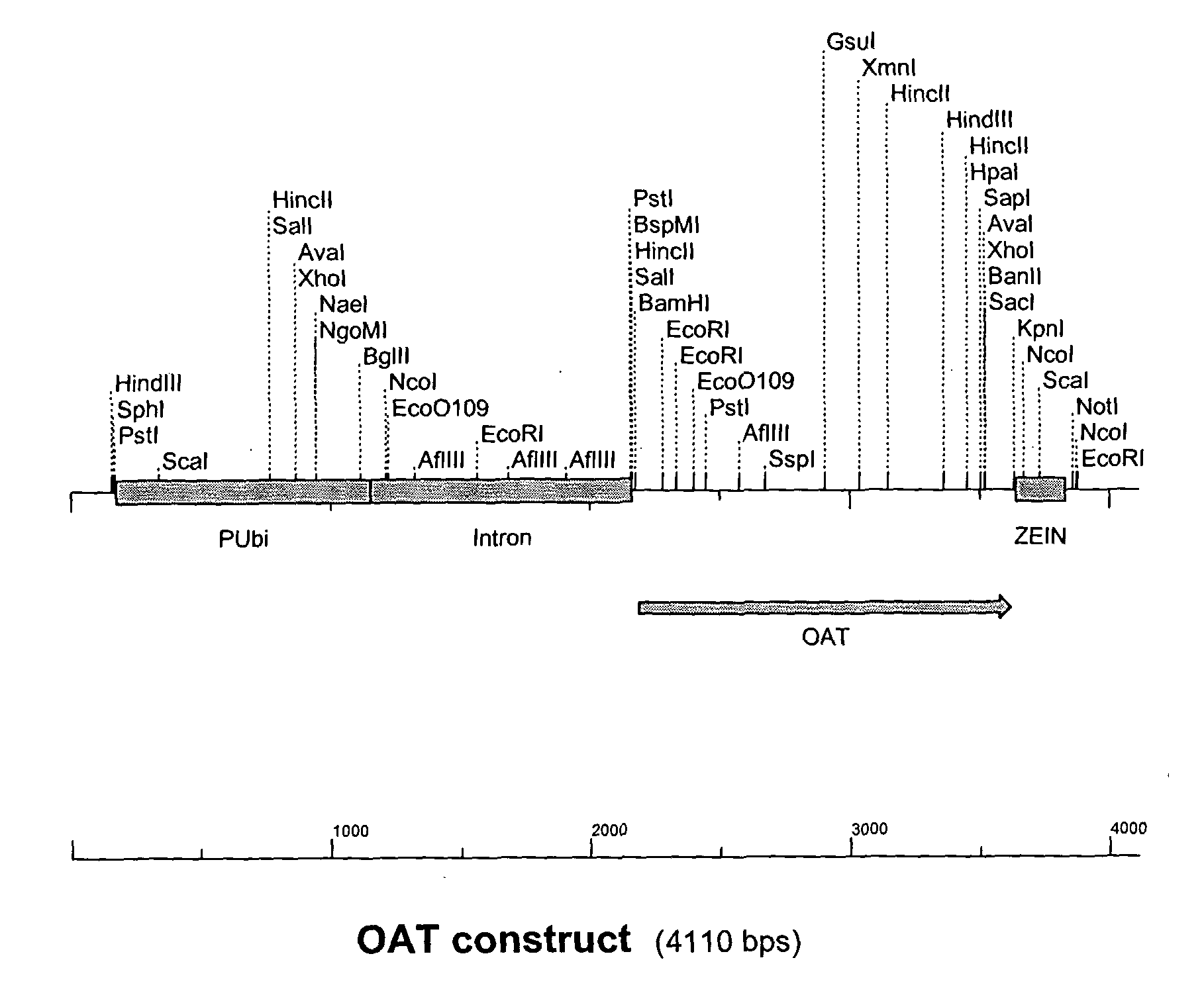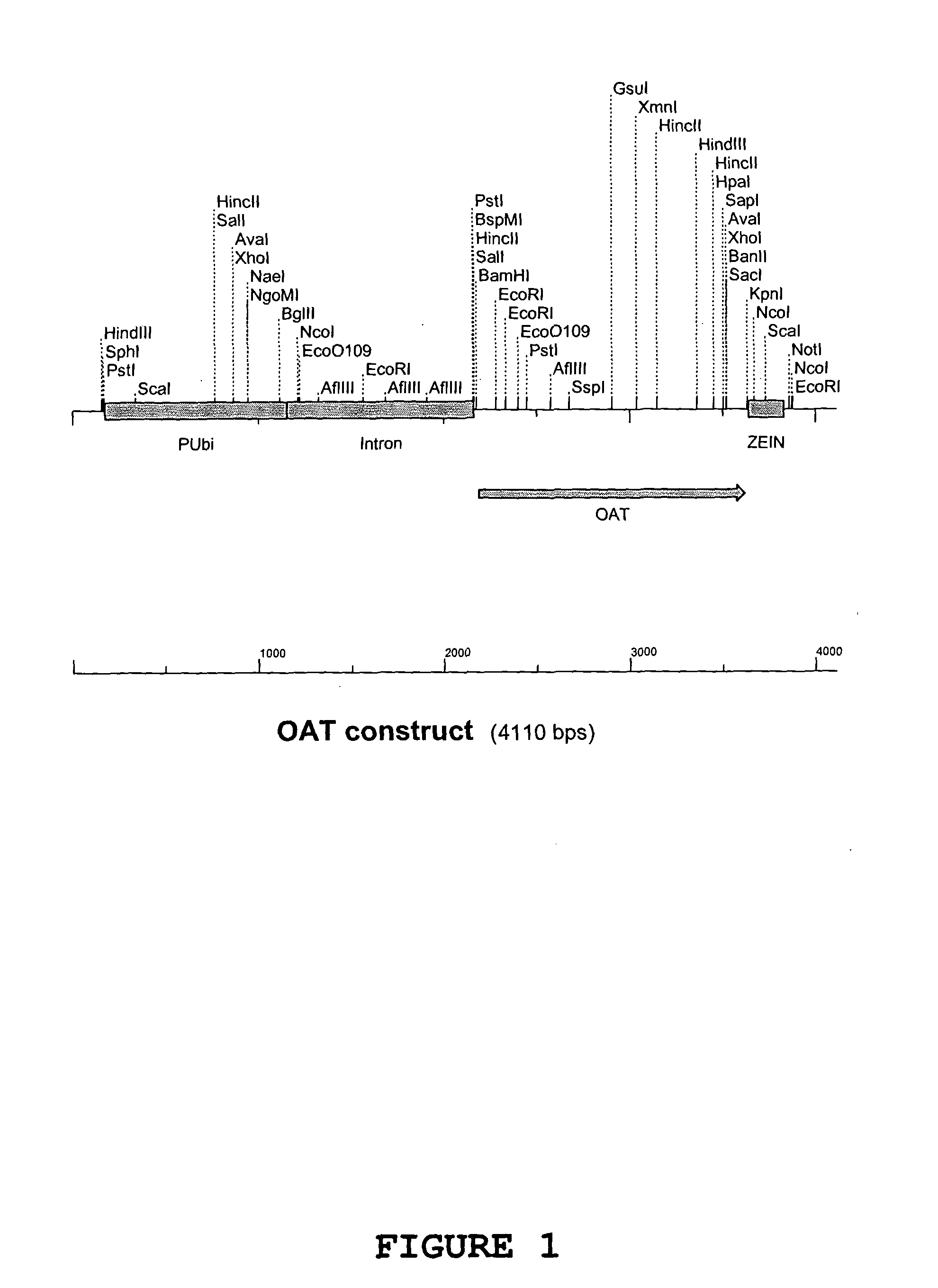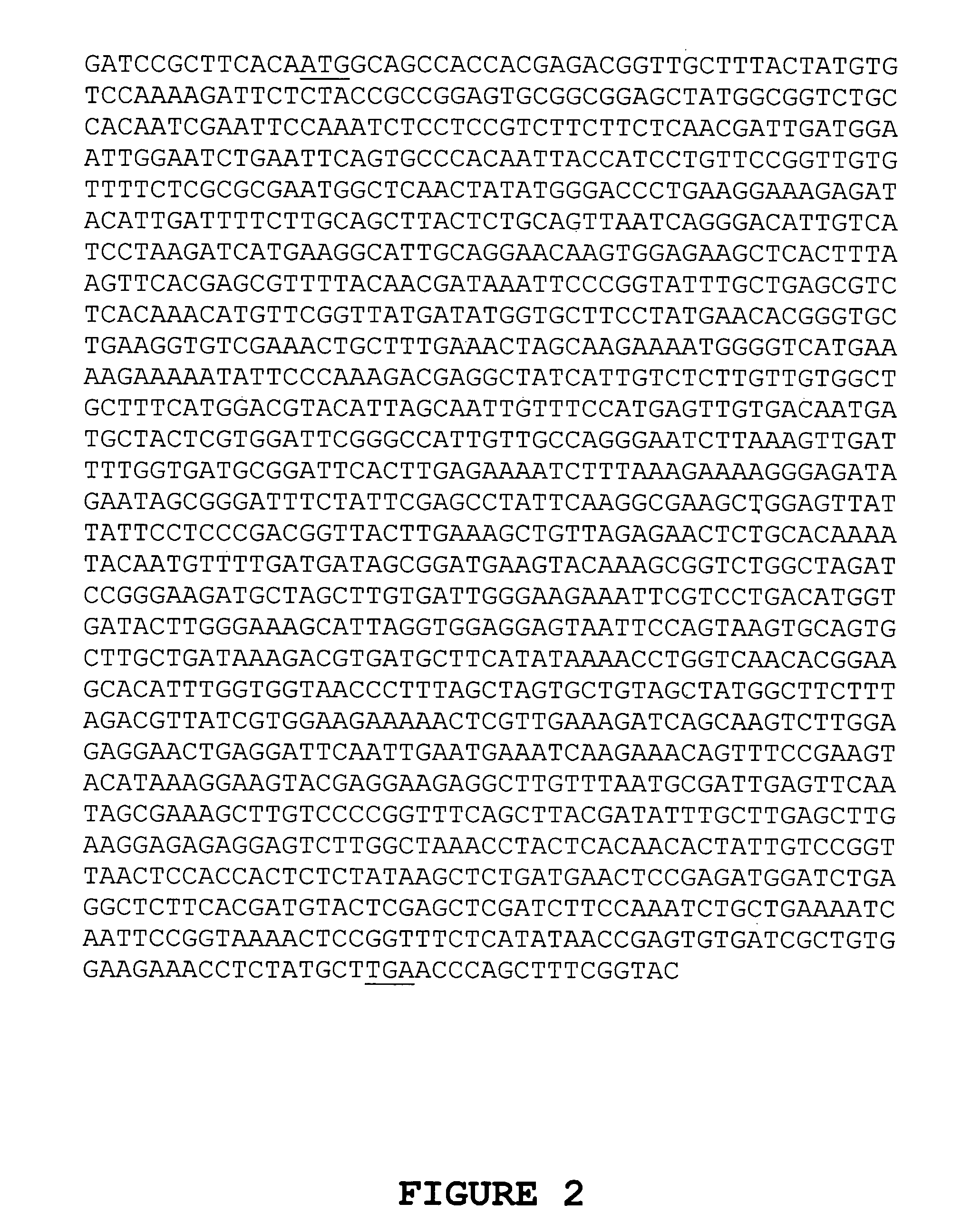Stress Tolerant Transgenic Wheat Plant
a transgenic wheat plant, stress-tolerant technology, applied in biochemistry, organic chemistry, biochemical apparatus and processes, etc., can solve the problems of slow process of conventional crossbreeding and low salt tolerance of plants successfully produced by conventional crossbreeding
- Summary
- Abstract
- Description
- Claims
- Application Information
AI Technical Summary
Benefits of technology
Problems solved by technology
Method used
Image
Examples
example 1
Ornithine Aminotransferase (OAT) Gene
[0186] The OAT gene was isolated from Arabidopsis thaliana into a binary vector. For transformation into wheat the gene was amplified by PCR amplification and transferred into vector pGBA2 using BamH1 and Kpn1 restriction sites.
[0187] The primers for amplification of the OAT gene with restrictions sites BamH1 (5′ end) and Kpn1 (3′ end) where as follows:
Forward primer -5′ GCATGGATCCGCTTCACAATGGCAGCAGCCACCACG
[0188] The BamH1 site is underlined and the start codon is bolded.
Reverse primer -5′ GCATGGTACCGAAAGCTGGGTTCAAGCATAGAGG
[0189] The Kpn1 site is underlined and the stop codon is bolded.
[0190] The primers used to identify the Arabidopsis OAT gene in transformed wheat were as follows.
Forward primer -5′ GAGTTGTGACAATGATGCTACTCGTGGReverse primer -5′ CGAGTACATCGTGAAGAGCCTCAGATCC
[0191] The length of the predicted PCR product was 770 bp fragment.
[0192] Amplification of the OAT gene with BamH1 and Kpn1 restriction sites was with Pfu DNA polymer...
example 2
Cloning of the Oat Gene into pGBA2 Vector
[0194] The OAT gene product with BamH1 and Kpn1 restrictions sites from Example 1 was cut with BamH1 and Kpn1 restriction enzymes and ligated into the pGBA2 vector also cut with BamH1 and Kpn1 between the Ubiquitin promoter and zein terminator. The Ubiquitin promoter, OAT gene and Zein terminator make up the OAT construct (FIG. 1). E. coli strain DH10b competent cells were transformed with the ligation mixture and plated onto LB agar containing ampicillin to select for E. coli cells transformed with pGBA2. Transformed E. coli colonies were then tested for the presence of the OAT gene within the pGBA2 plasmid by PCR amplification of a 770 bp fragment of the OAT gene. The presence of the OAT gene was confirmed by restriction digest and match the pattern with the predicted pattern of fragment sizes.
example 3
Sequencing the OAT Gene
[0195] Sequencing was carried out on one clone identified in Example 2 using an automated sequencer ABI377 (Applied Biosystems Industries) in accordance with the manufacturer's instructions. The sequencing was performed with the forward and reverse primers from Example 1 that generate the 770 bp fragment plus another internal primer (5′ ACAATTGCTAATGTACGTCC). The SeqEd™ version 1.0.3 software (Applied Biosystems Industries) was used to analyse the raw sequence data and the MultAlin (Corpet, 1988) web based program for sequence alignment with the putative Arabidopsis OAT gene sequence from Genbank (NM 123987). FIG. 2 shows the nucleotide sequence obtained, while FIG. 3 shows the amino acid sequence of OAT.
PUM
| Property | Measurement | Unit |
|---|---|---|
| temperature | aaaaa | aaaaa |
| speeds | aaaaa | aaaaa |
| pH | aaaaa | aaaaa |
Abstract
Description
Claims
Application Information
 Login to View More
Login to View More - R&D
- Intellectual Property
- Life Sciences
- Materials
- Tech Scout
- Unparalleled Data Quality
- Higher Quality Content
- 60% Fewer Hallucinations
Browse by: Latest US Patents, China's latest patents, Technical Efficacy Thesaurus, Application Domain, Technology Topic, Popular Technical Reports.
© 2025 PatSnap. All rights reserved.Legal|Privacy policy|Modern Slavery Act Transparency Statement|Sitemap|About US| Contact US: help@patsnap.com



